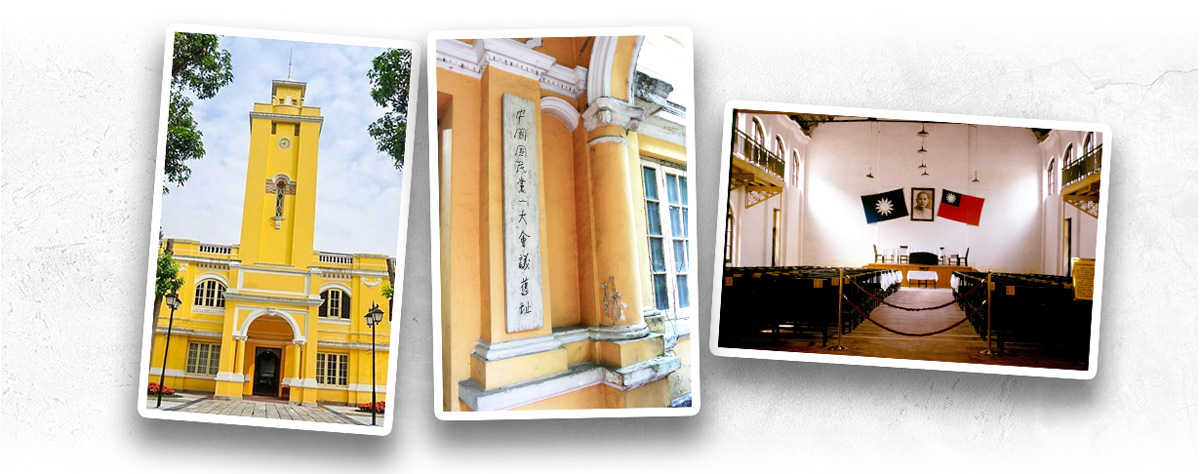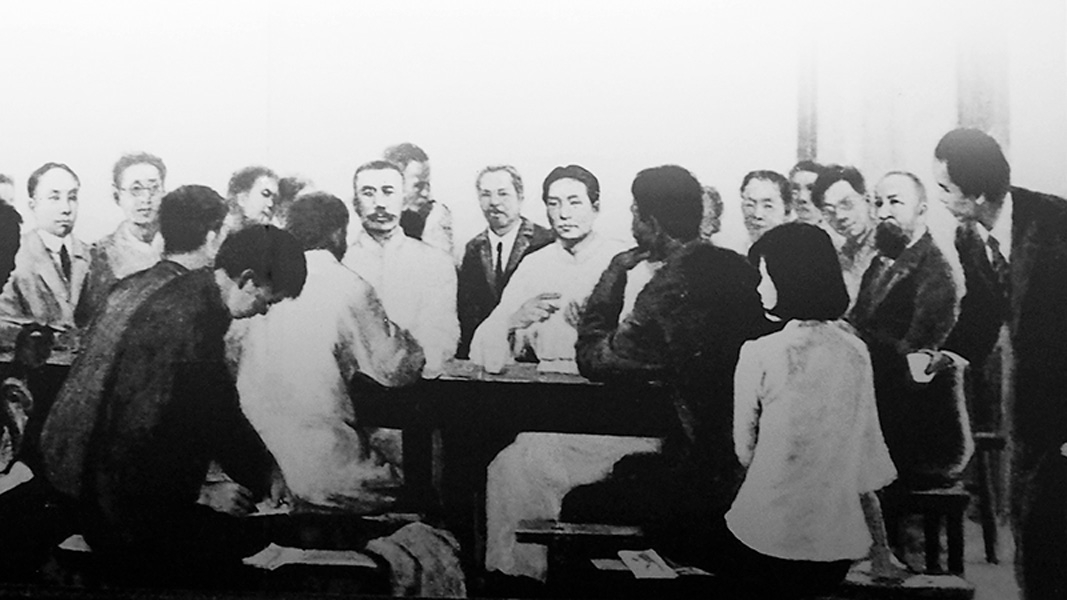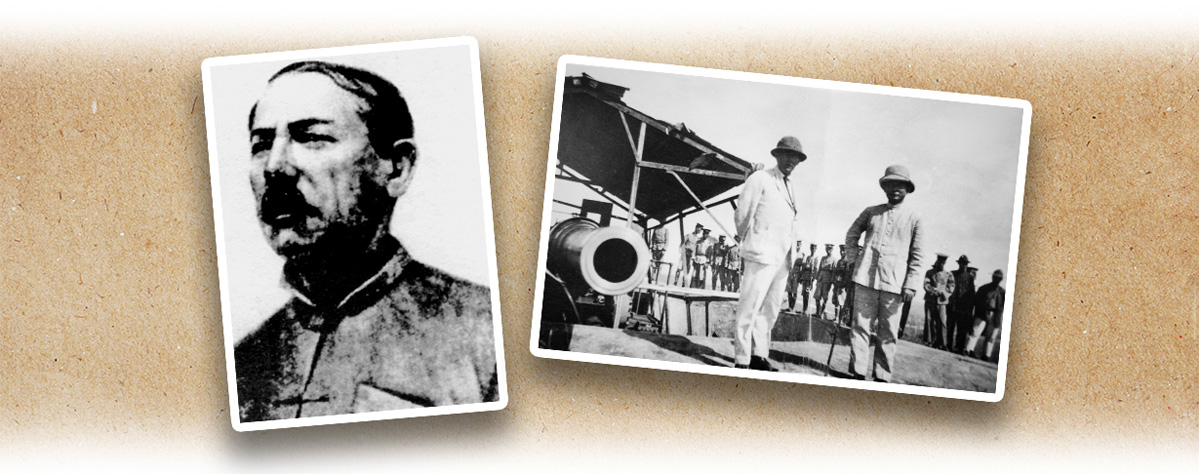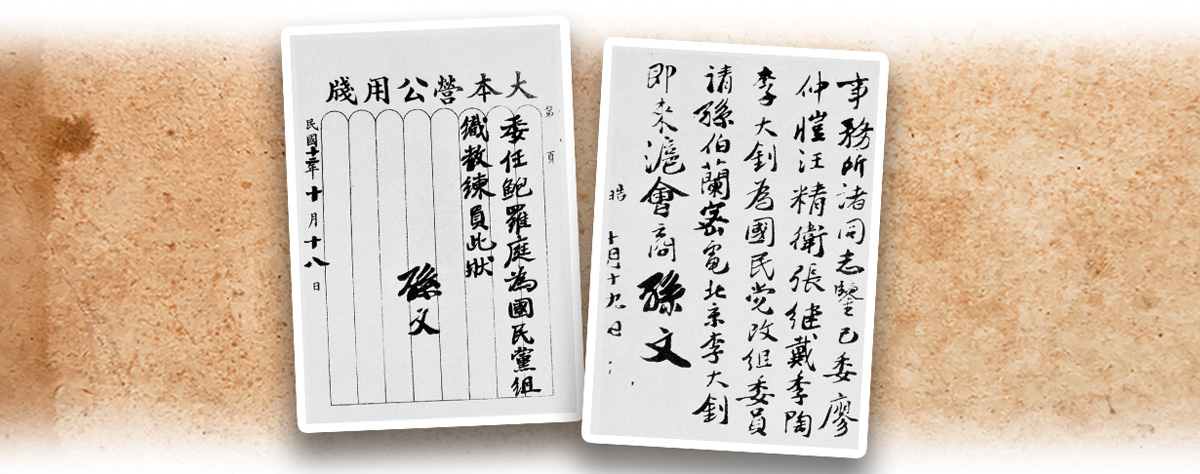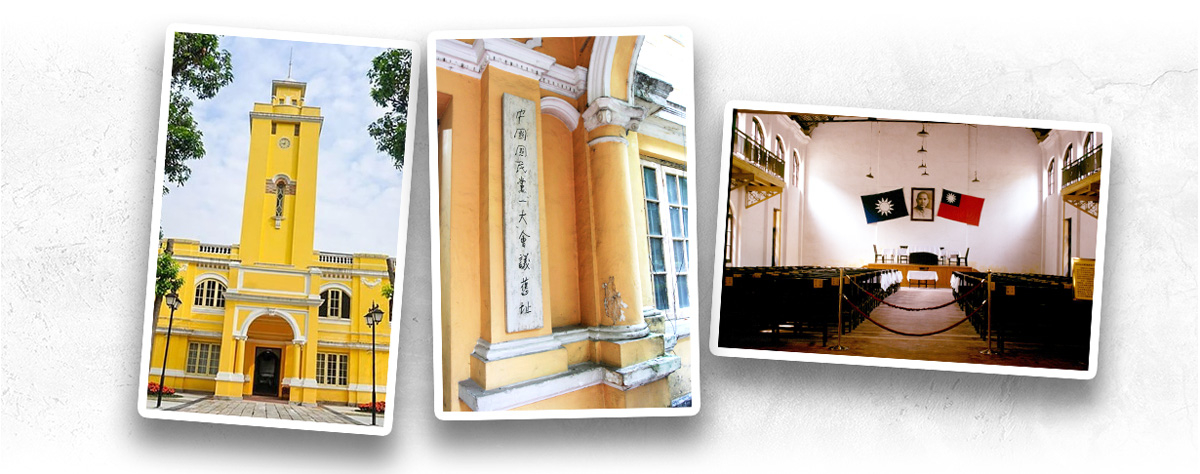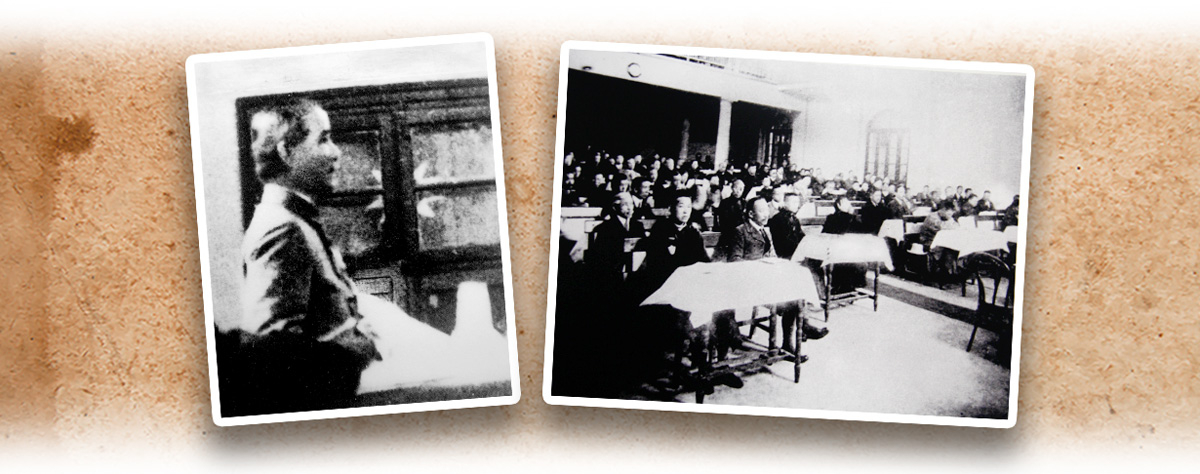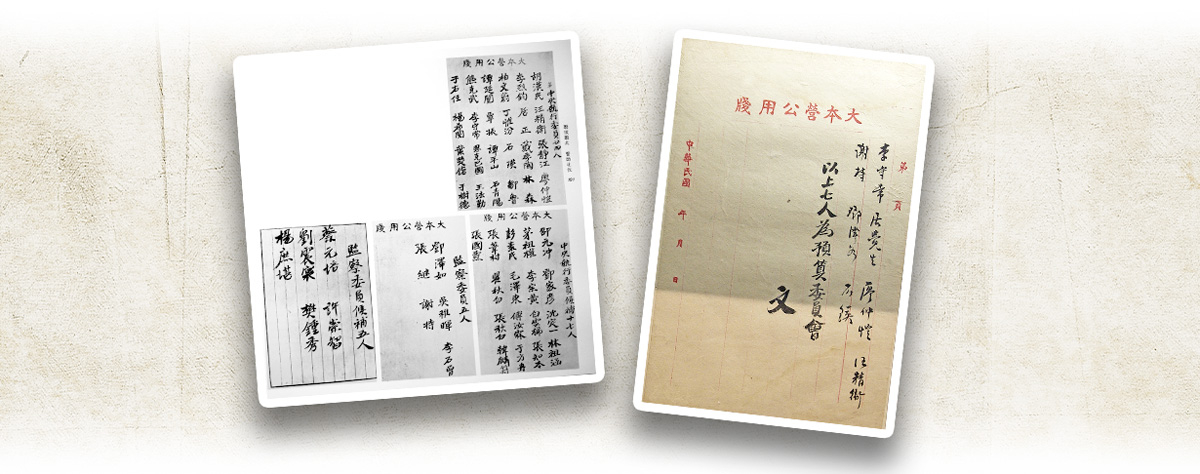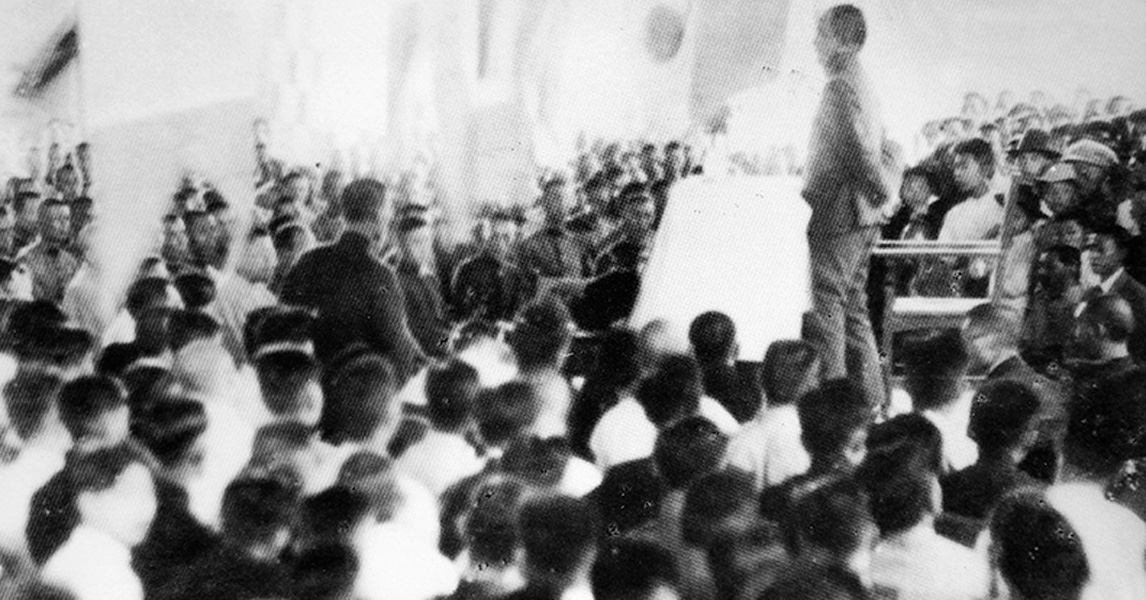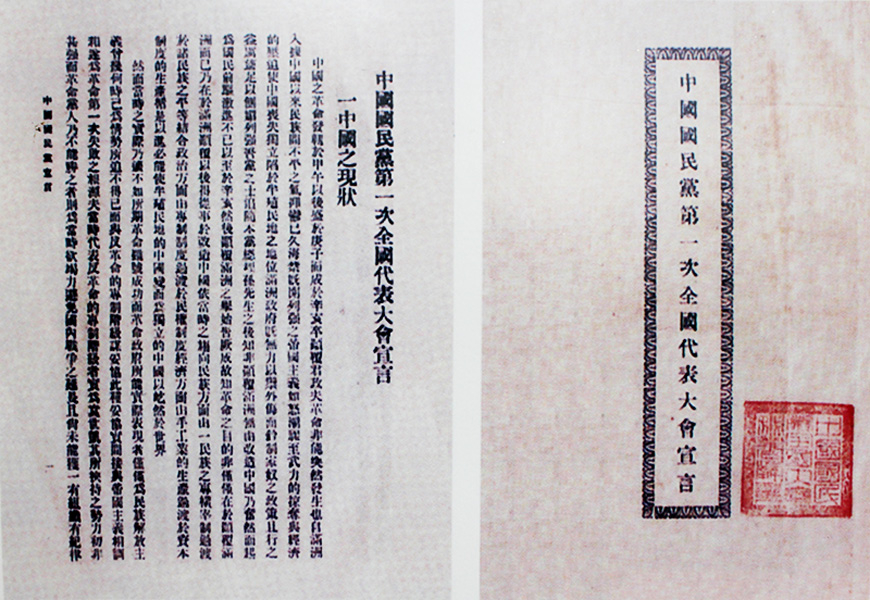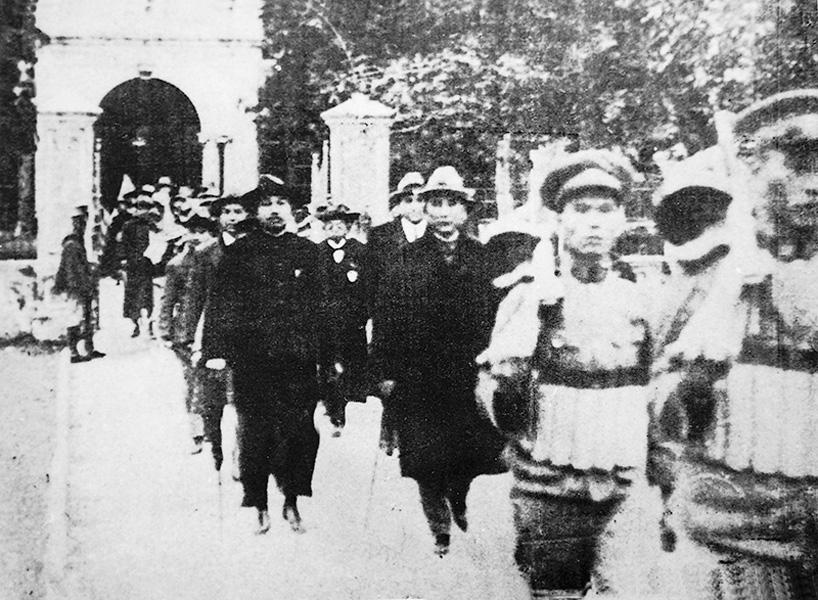After much reflection on the course of China’s revolution, Sun Yat-sen (孫中山) decided to adopt the policy of “allying with Soviet Russia” or “friendship with Soviet Russia” and expressed his willingness to “accommodate the Chinese communists” within the Kuomintang of China (KMT, 中國國民黨) as advised by Soviet Russia. By “accommodating”, Sun interpreted it as: “The KMT would allow members of the Chinese Communist Party (CCP, 中國共產黨) to join on an individual basis, not that it would allow the introduction of Communism.” In February 1923, Li Dazhao (李大釗) became the first CCP member to join the KMT. Sun proceeded to finish restructuring the KMT’s operations with the aid of Soviet advisor Mikhail Markovich Borodin. On 20-30 January 1924, Sun convened the KMT’s first national congress in Guangzhou (廣州). It was attended by 165 representatives, including some CCP members.
The Congress passed the KMT’s declaration and constitution, and adopted the policies of allying with Soviet Russia (聯俄), accommodating the Chinese Communists (容共), and assisting peasants and workers (扶助農工). Sun further explained the “Three Principles of the People” – nationalism, democracy, and people’s livelihoods – in the declaration. Other resolutions passed at the Congress included the establishment of a national government and a military academy. This meeting officially marked the beginning of the first KMT-CCP cooperation (1924-27).
|
|
Why was the KMT’s stance towards CCP summarised as “allying with the Chinese communists” by some and “accommodating the Chinese communists” by others? How should the “New Three Principles of the People” be interpreted? |
|
|
See answer below. |
The Sun-Joffe Manifesto (《孫文越飛宣言》) issued on 26 January 1923 represented a preliminary consensus between Sun Yat-sen and the Soviet Union (officially established on 30 December 1922). It was a crucial foundation for the first KMT-CCP cooperation that followed. In February 1923, the first CCP member Li Dazhao joined the KMT. From 12 to 20 June 1923, the CCP convened its third national congress in Guangzhou (pictured). During the meeting, the CCP affirmed its cooperation with the KMT and formally agreed on allowing its members to join the KMT as individuals.
On the left: Mikhail Markovich Borodin, the Communist International (Comintern)’s representative to China during 1923-27; on the right: Sun Yat-sen (figure with a cane) and Borodin surveying Weiyuan Fort (威遠炮台) of Humen (虎門) in October 1923. Borodin was a key figure in the first KMT-CCP cooperation.
Sun Yat-sen’s party and Soviet Russia each had different reasons for forming an alliance: Sun needed support from Japan and the Western countries, yet these countries tended to support powerful warlords instead to protect their own interests in China. Japan and Britain, for instance, supported Zhang Zuolin (張作霖) and Wu Peifu (吳佩孚) respectively. Thus, Soviet Russia was left as the KMT’s only potential foreign ally.
For Soviet Russia, it was completely blockaded and isolated by Japan and the Western countries after its 1917 Revolution. These countries even supported the anti-Soviet White Movement and sent troops to intervene the Russian Civil War to topple the fledging communist regime. In dire need to consolidate its power and export revolution, Soviet Russia was keen to support communist movement worldwide and naturally turned to its neighbour China for an alliance. As most of the Chinese warlords at that time were anti-communist and unwilling to go against their imperialist patrons by cultivating ties with Soviet Russia, Sun and the KMT were chosen instead.
On the left: Sun Yat-sen signed the appointment of the Comintern representative Borodin as adviser on the KMT organisation on 18 October 1923; on the right: a letter dated 19 October 1923 from Sun in Guangzhou to the KMT office in Shanghai (上海), inviting CCP member Li Dazhao to Shanghai to discuss the KMT’s reorganisation.
The First National Congress of the Kuomintang of China was held at the Guangdong Secondary Normal School from 20 to 30 January 1924. Pictured are modern-day photos of the congress venue.
On the left: the First National Congress of the Kuomintang of China was convened on 20 January 1924. As the premier of the KMT, Sun Yat-sen chaired the congress and presided over the opening ceremony; on the right: the congress venue.
In his opening address at the First National Congress of the Kuomintang of China, Sun Yat-sen said, “The objective of the KMT’s reorganisation is twofold: first, to reorganise and transform it into a powerful and organised political party; secondly, to use the KMT’s power as a political party to transform the nation.”
On the left: Sun Yat-sen’s handwritten membership lists for the Kuomintang Central Executive Committee and the Kuomintang Central Supervisory Committee; on the right: a list of Budget Committee members elected at the first national congress, with Sun’s signature of approval.
Sun Yat-sen delivering a lecture on the “Three Principles of the People” at the First National Congress of the Kuomintang of China on 27 January 1924.
The Declaration of the First Congress of the Kuomintang of China (《中國國民黨第一次全國代表大會宣言》) was passed at the founding congress. A new interpretation of the “Three Principles of the People” within the declaration established three key policies (known as the “Three Policies”): allying with Soviet Russia, accommodating the Chinese communists, and assisting the peasants and workers.
A group photo taken during the First National Congress of the Kuomintang of China, featuring Sun Yat-sen (sixth figure from the left in the front row), CCP member Qu Qiubai (瞿秋白, third figure from the left in the back row), and other attendees outside the congress venue.
Sun Yat-sen (third figure from the right) and Li Dazhao, one of the CCP founders (right to Sun), exiting the congress venue.
The KMT-CCP cooperation was founded on a shared opposition to foreign imperialism and warlordism. During the First National Congress of the Kuomintang of China, many CCP members were given important posts. Among the 24 members elected to the Kuomintang Central Executive Committee, three (including Li Dazhao) were CCP members. Seven of the 17 alternative members of the Kuomintang Central Executive Committee were CCP members as well. Also, many CCP members were given key posts in different party organs: Tan Pingshan (譚平山), Lin Zuhan (林祖涵), and Mao Zedong (毛澤東) were appointed the Minister of the Central Organisation Department, the Minister of Agriculture, and the acting head of the Central Propaganda Department respectively. After the KMT’s national congress, the CCP was able to greatly expand its influence within the KMT and its development in China accelerated.
|
|
Why was the KMT’s stance towards CCP summarised as “allying with the Chinese communists” by some and “accommodating the Chinese communists” by others? How should the “New Three Principles of the People” be interpreted? |
|
|
At the First National Congress of the Kuomintang of China held in January 1924, policies to ally with the Soviets, accommodate the Chinese communists, and assist peasants and workers were adopted. The slogan “allying with Soviet Russia and accommodating the Chinese communists” was first proposed by the Kuomintang Central Supervisory Committee member Wu Zhihui (吳稚暉) in 1927. It was then modified by the CCP to “allying with Soviet Russia, allying with the Chinese communists”. Both slogans entered popular usage at a point well into the cooperation. Although the term “allying with Soviet Russia and accommodating the Chinese communists” appeared late, it was implemented earlier as a policy advocated by Sun Yat-sen in his later life. The groundwork for it was laid as early as the beginning of 1923, when Sun and the Soviet Russian Emissary Adolf Abramovich Joffe issued the Sun-Joffe Manifesto (《孫文越飛宣言》) on 26 January. In the same year, Sun cooperated with the Comintern and relocated the base camp against the Beiyang Warlords (北洋軍閥) back to Guangzhou. Under the Soviet influence, he overcame overwhelming opposition to allow CCP members to join the KMT as individuals. Early on, Sun invited Chen Duxiu (陳獨秀) to participate in the KMT’s reorganisation work; then, in early February of 1923, Li Dazhao arrived in Shanghai from Beijing (北京) and became the first CCP member to join the KMT. Sun himself interpreted “accommodating the Chinese communists” as follows: “While communist members are able to join our party on an individual basis, they are not allowed to introduce communism into our party. All party members must uphold the “Three Principles of the People” or they would face punishment under the party discipline.” It was clear that Sun allied with Soviet Russia to counter foreign imperialism and accommodated the Chinese communists to counter domestic warlordism. Some have referred to Sun’s “Three Policies” – allying with Soviet Russia, allying with the Chinese communists, and assisting peasants and workers – as his “New Three Principles of the People”. Understandably, many still prefer the “Three Principles of the People” to remain known as their unchanging core tenets – meaning nationalism, democracy, and the people’s livelihood. However, the so-called new principles can simply be viewed as Sun’s attempt to interpret the “Three Principles of the People” in accordance with changing times: the objective of the first principle, nationalism, was changed from “freeing the people from the Qing dynasty’s tyrannical rule” to “resisting foreign imperialism”; the objective of the second principle, democracy, became “the creation of a democratic governance system shared by all the common people and not privately owned by the few” ; and the third principle, people’s livelihood, spurred Sun’s advocacy of “land to the people” and “the regulation of capital”. |
Sources of most photos used in this feature piece: Fotoe and misc. photo sources.




